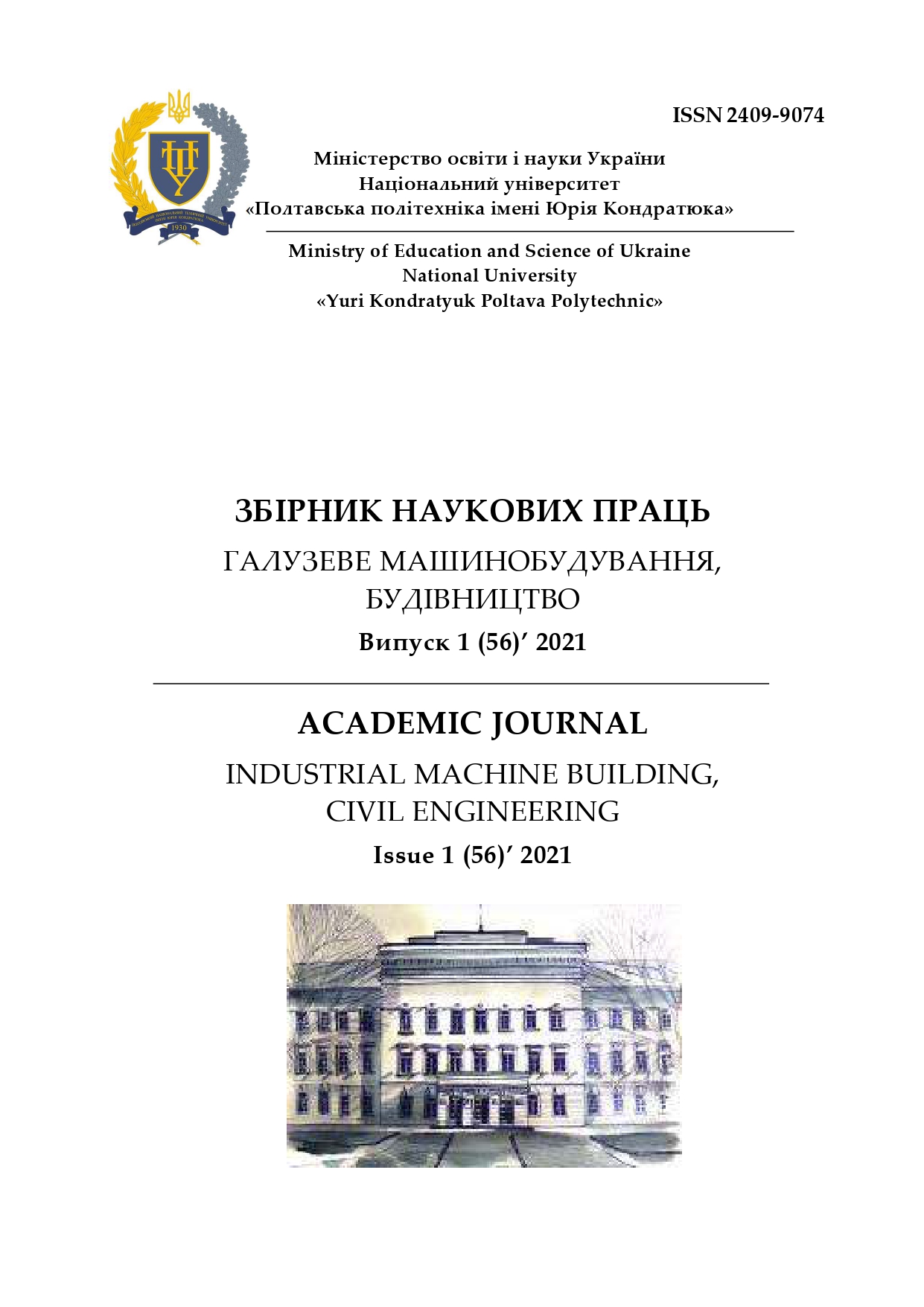Substantiation of the temperature regime of the differential pump of electromagnetic action
DOI:
https://doi.org/10.26906/znp.2021.56.2516Keywords:
differential pump, finishing mixture, plunger, Foucault currentAbstract
The article discusses the temperature of the working body caused by Foucault currents circulating inside of the working body of a differential pump of electromagnetic action. The article begins with a theory describing the nature of the Foucault current and the causes of the plunger heating. Then there is a characteristic of the differential pump of electromagnetic action. The following is a description of the structures of the working bodies of the differential pump of electromagnetic action. The estimated data of the working body are entered in the table. These tables are taken into account when plotting. The theory substantiates the conditions of heating of the working body, the existence of eddy currents, and also the influence of the temperature of the actuator on the operation of the differential pump. The description shows what role the plunger plays in the operation of the differential pump. The article described in detail the interaction of the working body and the solenoid of the differential pump.
References
Korobko B., Zhyhylii S., Kivshyk A. (2019). Mathematical simulation of the motion law of differential mortar pump piston intended for construction mix. Academic journal. Series: Industrial Machine Building, Civil Engineering, 1(52), 13-20
https://doi.org/10.26906/znp.2019.52.1665 DOI: https://doi.org/10.26906/znp.2019.52.1665
Korobko B., Vasyliev Ye. (2017). Test Method for Rheological Behavior of Mortar for Building Work. Acta Mechanica et Automatica, 11(3), 173-177
https://doi.org/10.1515/ama-2017-0025 DOI: https://doi.org/10.1515/ama-2017-0025
Onushko V.V., Shefer O.V. (2007). Transformers. Poltava, PoltNTU
Schaefer O.V., Galay V.M., Kritsky V.V. (2015). Diagnosis of electric motors of complex electromechanical systems. Control, Navigation and Communication Systems, 2, 56-60
Onushko V.V., Schaefer O.V. (2015). Electric cars. Poltava, PoltNTU
Schaefer O.V., Divitsky V.D. (2015). Diagnosis and non-destructive control of parameters of asynchronous electric motors based on the analysis of current consumption spectra. Collection of scientific works on the materials of the All-Ukrainian scientific-practical conference "Electronic and mechatronic systems: theory, innovation, practice". Poltava, PoltNTU, 81-83
Sribnyuk S. (2017). Pumps and pumping units. Center for Educational Literature
Korobko B.O., Kivshik A.V. (2020). Theoretical substantiation of working processes and operating modes of differential pump of electromagnetic action. Collection of scientific papers based on the materials of the international conference "Building innovations 2020". Poltava, PoltNTU, 110-112
Schaefer O.V., Myakushko R.V. (2015). Diagnosis of parameters and non-destructive testing of asynchronous electric motors. Collection of scientific works on the materials of the All-Ukrainian scientific-practical conference "Electronic and mechatronic systems: theory, innovation, practice". Poltava, PoltNTU, 84-85
Korobko B., Kivshyk A., Kulagin D. (2022). Experimental Study of the Efficiency of the Differential Pump of Electromagnetic Action on the Basis of Mathematical Modeling of the Parameters of Its Operation. Lecture Notes in Civil Engineeringthis, 181, 203-213 DOI: https://doi.org/10.1007/978-3-030-85043-2_20
Vasiliev E.A., Vasiliev O.S. (2016). Factors influencing the volumetric efficiency of the piston mortar pump and ways to increase it. Scientific Bulletin of Construction, 2 (84), 349-352
http://77.121.11.9/handle/PoltNTU/1141
Veleschuk V., Vlasenko A., Vlasenko Z., Petrenko I., Malyi Y., Borshch V., Borshch O., Shefer A. (2019). Current-voltage characteristic and electroluminescence of UV LEDs 365 nm at liquid nitrogen temperature. Optica Applicata, 49, 125-133
https:/doi.org/10.5277/j.renene.2019.03.041
Vasiliev E.A., Vasiliev A.V., Popov S.V. (2017). Reduction of energy consumption during transportation of mortars by pumps with a mechanical drive. Proceedings of the VI International Scientific and Technical Conference "Actual Problems of Modern Technologies". Ternopil: TNTU
Vasiliev E.A., Vasiliev O.S. (2019). The choice of material for the multilayer diaphragm of the mortar pump in order to increase its wear resistance. Proceedings of the IX International Scientific and Practical Conference "Comprehensive Quality Assurance of Technological Processes and Systems". Chernihiv: ChNTU
Korobko B., Vasyliev O., Rohozin I., Vasyliev Ye. (2018). Signature Analysis of the Hydraulic Accumulators when Using in Energy Recovery Systems in Automobiles. International Journal of Engineering & Technology, 7(4.8), 713–719
https://doi.org/10.14419/ijet.v7i4.8.27446
Kaczynski R., Vasyliev O., Vasyliev Ye. (2018). The Fracture Process of the Mortar Pump’s Work Surfaces with Abrasive Particles. International Journal of Engineering & Technology, 7(3.2), 154-159
https://doi.org/10.14419/ijet.v7i3.2.14394 DOI: https://doi.org/10.14419/ijet.v7i3.2.14394
Rohozin I., Vasyliev O., Pavelieva A. (2018). Determination of Building Mortar Mixers Effectiveness. International Journal of Engineering & Technology, 7(3.2), 360-366
https://doi.org/10.14419/ijet.v7i3.2.14553 DOI: https://doi.org/10.14419/ijet.v7i3.2.14553
Korobko B., Zadvorkin D., Vasyliev Ye. (2018). Energy Efficiency of a Hydraulically Actuated Plastering Machine International Journal of Engineering & Technology, 7(3.2), 203-208
https://doi.org/10.14419/ijet.v7i3.2.14403 DOI: https://doi.org/10.14419/ijet.v7i3.2.14403
Korobko B. (2016). Investigation of energy consumption in the course of plastering machine’s work. Eastern-European Journal of Enterprise Technologies, 4/8 (82), 4-11 DOI: https://doi.org/10.15587/1729-4061.2016.73336
https://doi.org/10.15587/1729- 4061.2016.73336
Downloads
Published
How to Cite
Issue
Section
Published 2021-09-30




